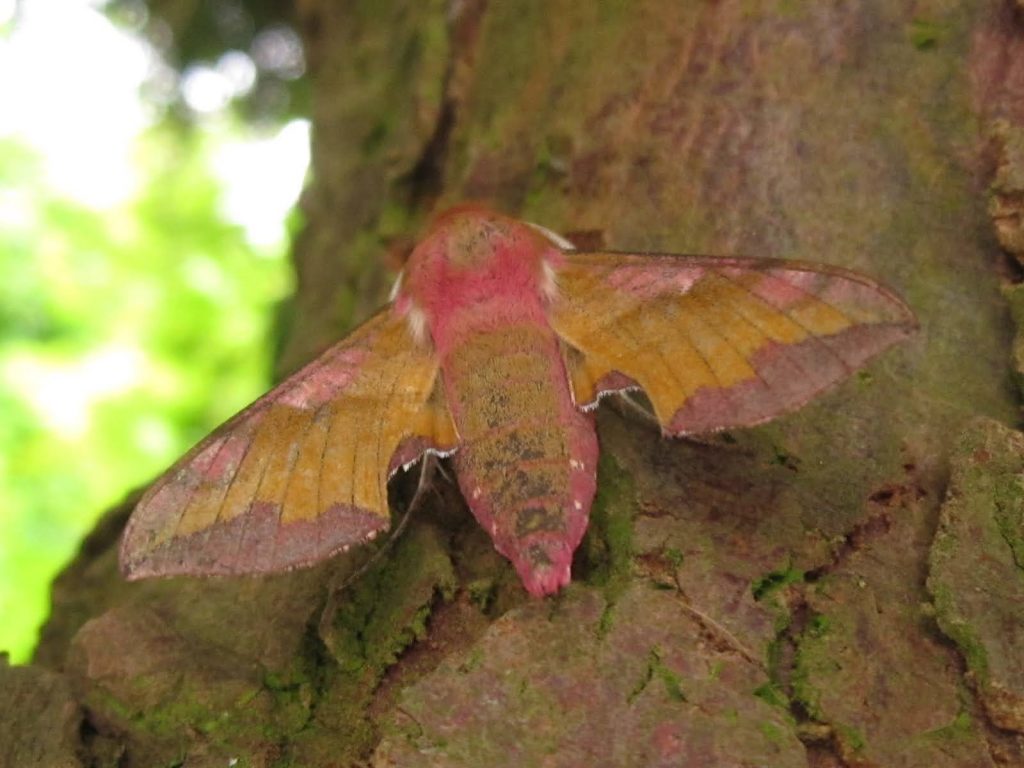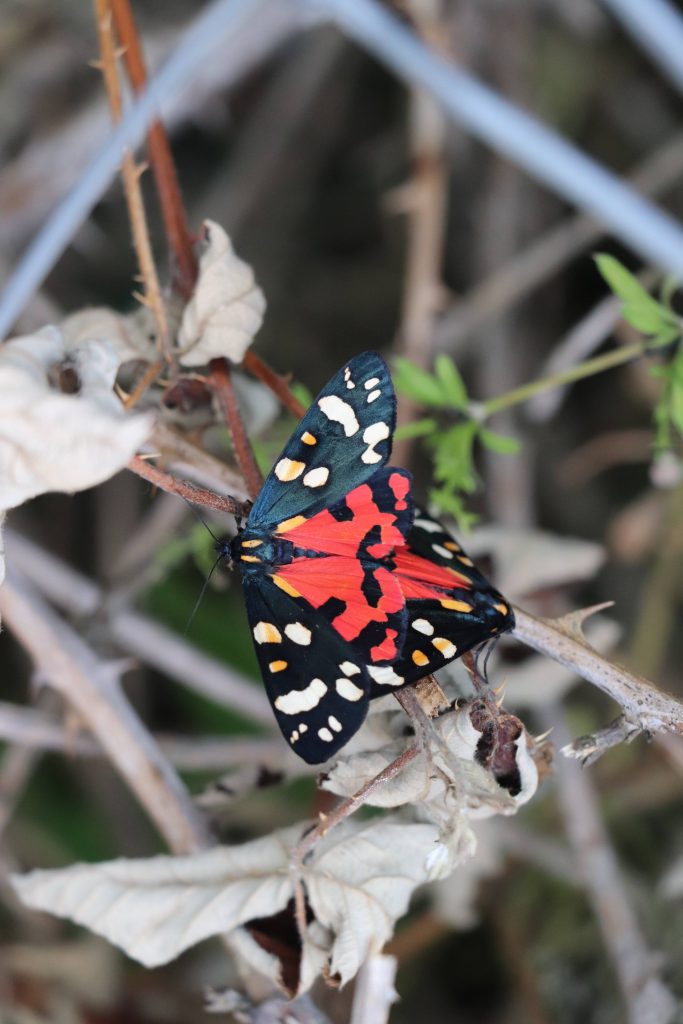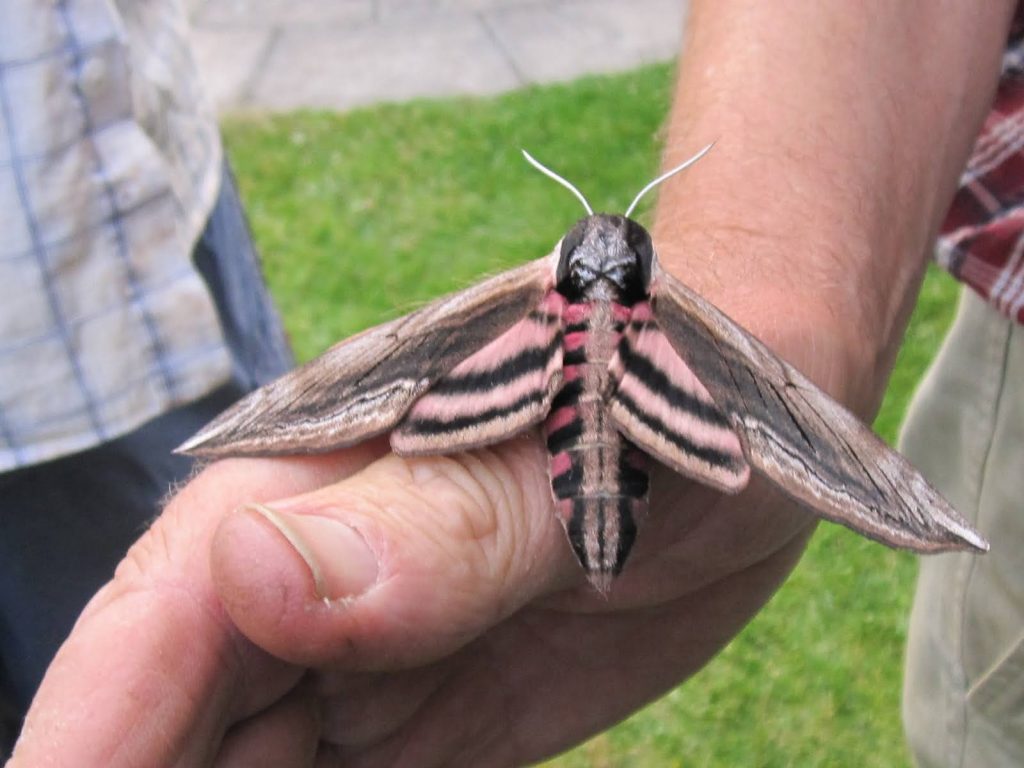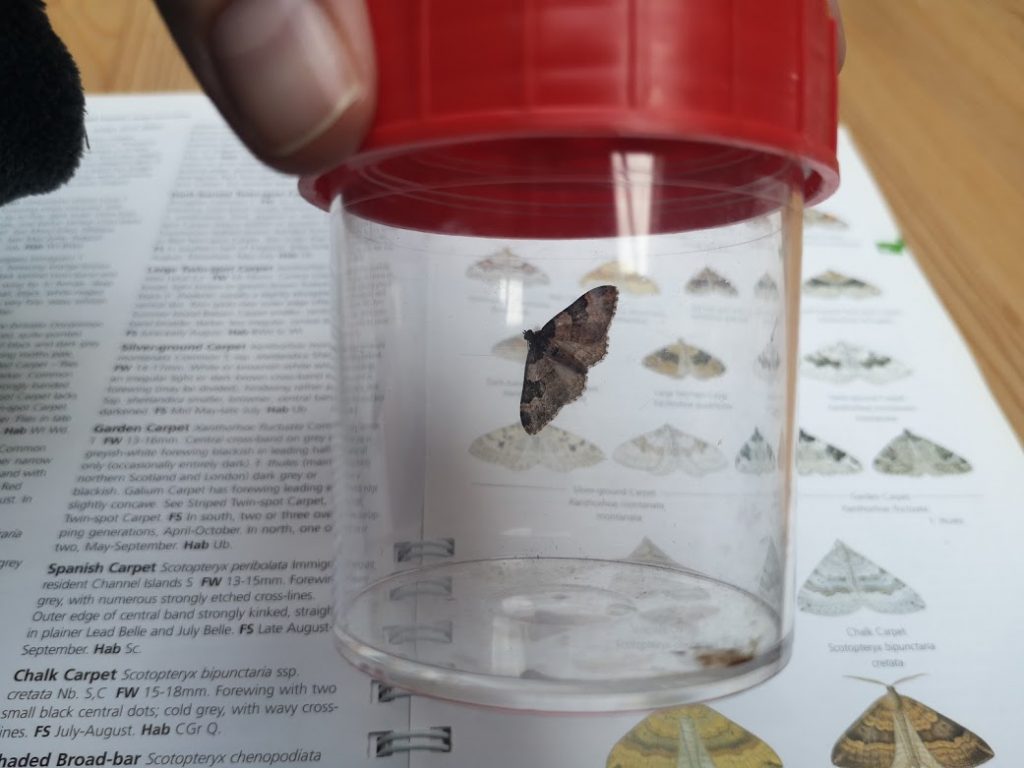Tigers, hawks and hummingbirds: what will you find on Moth Night?
- 28 June 2021
-
 Meriel Harrison
Meriel Harrison
- Insects, Moths
We are lucky to have a huge variety of moths on our doorstep, with an incredible 1,500 species found in the Bristol area. Moth Night runs from 8-10th July this year and is the perfect opportunity to get to know your night-time neighbours.

Moths have an undeserved reputation for being drab and boring, when in fact their world is one of wonderful variety – there are some 2,500 moth species in the UK, compared to just 59 butterfly species. Some wear bright colours that make them unmistakeable, like the striking red and black Scarlet Tiger moth or the pink and green Elephant Hawk-moth. The names of moths have a poetry all of their own, and part of the joy of learning about moths is finding out you are looking at a Heart and Dart, a Brindled Beauty or a Feathered Footman.

Moth Night is an annual celebration of moths and moth recording organised by Atropos, Butterfly Conservation and the UK Centre for Ecology and Hydrology. This year’s theme is reedbeds and wetlands, making it particularly relevant for our local environment. On the North Somerset Levels and Moors wetland species such as the Gold Spot moth are supported by the rhynes and the plants that grow in and around them. There are even moths whose larvae start off life in the water, with three of these – Small China-mark, Brown China-mark and Beautiful China-mark – found in the Yatton and Congresbury area. Other caterpillars feed on reeds and rushes, with local reedbeds providing a home and a meal for the Twin-spotted Wainscot and the Round-winged Muslin.
Moths are fascinating to observe, and you don’t need to go anywhere or have expensive specialist equipment to get your ‘mothing’ started. Most moths fly at night but some, such as the Cinnabar moth and the Hummingbird Hawk-moth, fly during the day making it more likely you might see them when you’re out and about. Moths that fly by night are usually attracted either to light or to sweet lures, and Butterfly Conservation have advice on ways to attract and observe moths in your garden or local area with kit as simple as a bedsheet and a torch. Growing plants and shrubs that attract moths can give you a better chance of seeing them and supporting their conservation.

Purpose-built moth traps are usually more effective but can be expensive to buy. YACWAG has a specialist group carrying out moth trapping. The moths are attracted to light traps overnight and are then released unharmed in the morning giving members the chance to see them up close and learn more about them. We have a small number of moth traps that can be loaned out to members, and we can provide instructions on how to use them. If you are interested in borrowing a moth trap, please email [email protected].

For help identifying the moths you find, the UK Moths website has a helpful ‘Beginners Top 20’ as well as more detail on all 2,500 UK moth species. UK Moth ID can provide identification if you tag them on Twitter and include your location, and our local YACWAG moth experts can often help you identify your moths if you share your photos on the YACWAG Facebook group. You can find out more about some of the moth species found in the local area on our Insects webpage.
Take part in this year’s Moth Night by observing moths any time from 8-10th July and submitting your records on the Moth Night website where they will help build a picture about where different moths live and how well they are doing. Please also share your moth finds on YACWAG Facebook and tagging #yacwag on Instagram – we always love to see your photos of local wildlife.
© Copyright YACWAG, or original authors. All rights reserved. | Registered charity 1076362 | Privacy policy | Cookie policy | Terms & Conditions |Web design: StanfordGraphics


